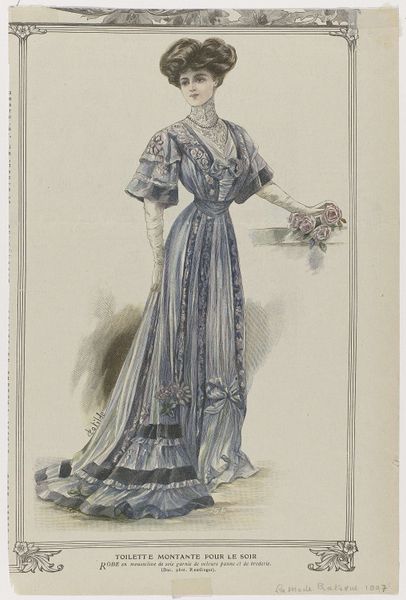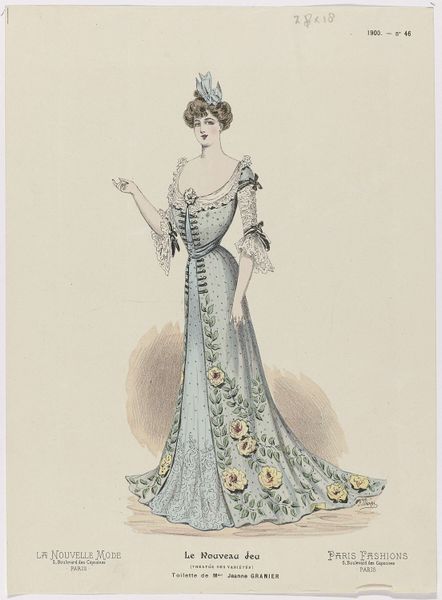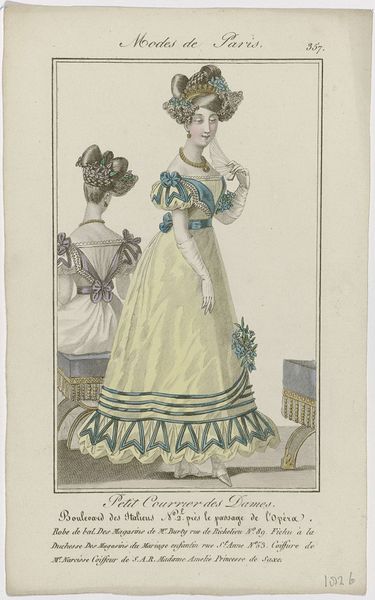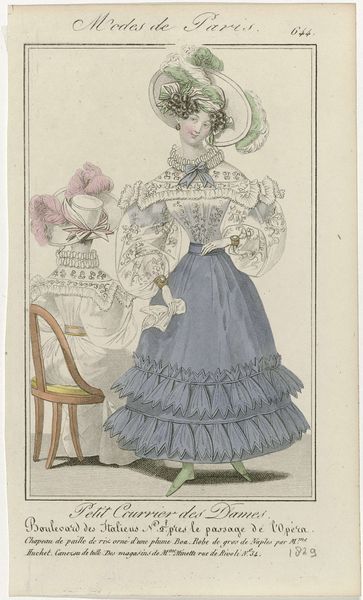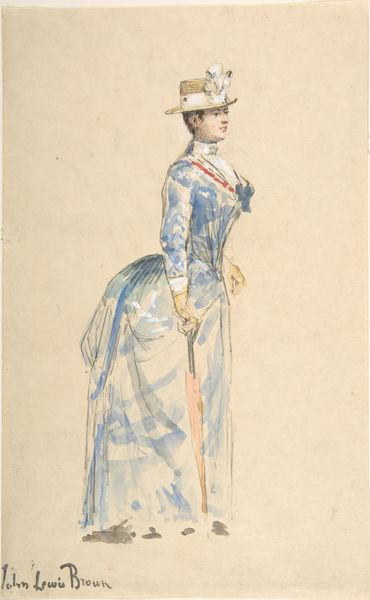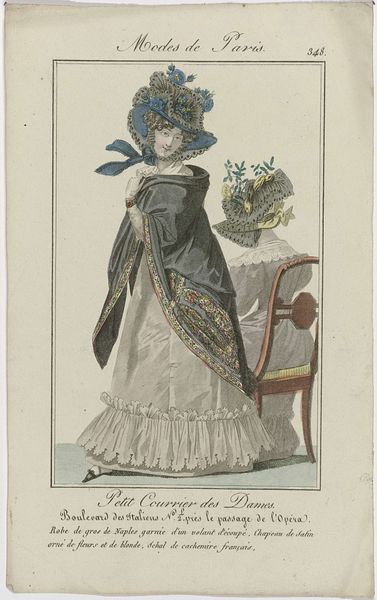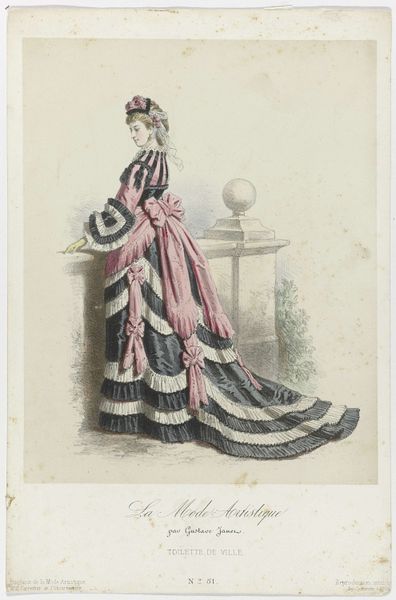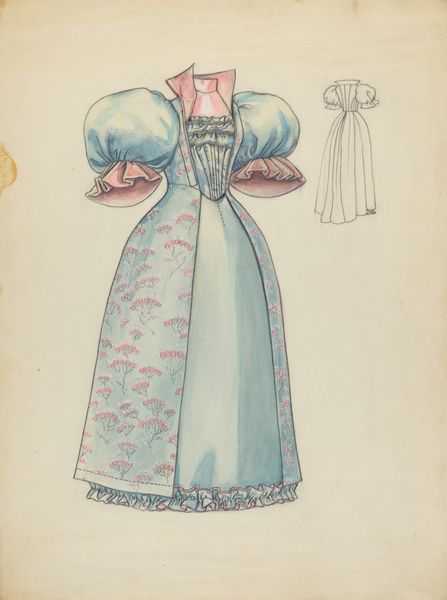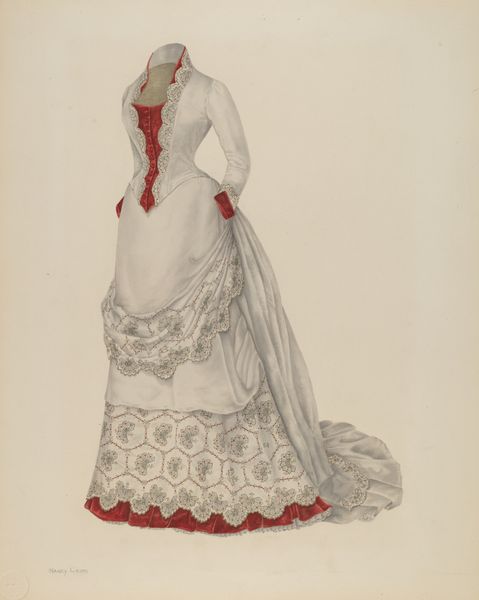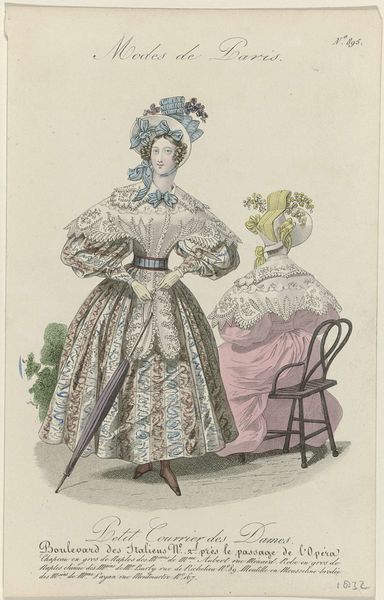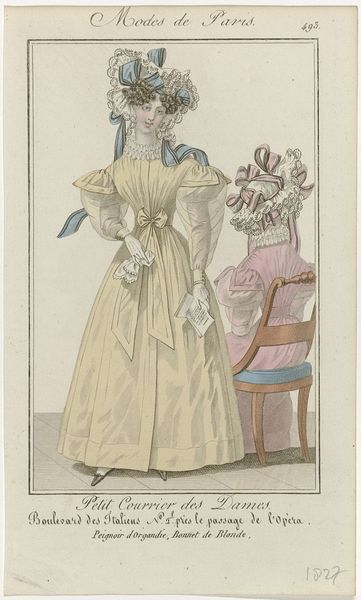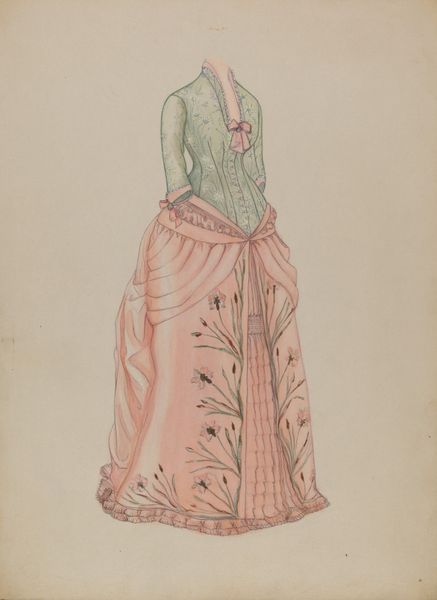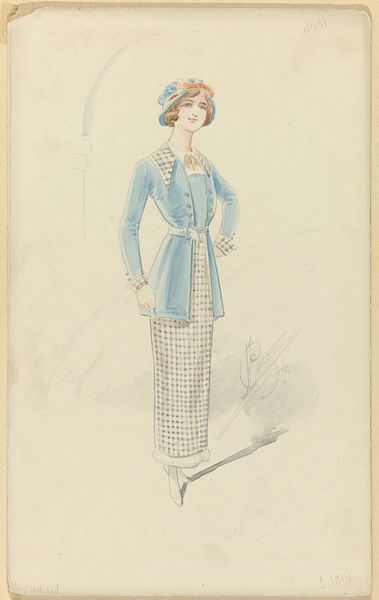
La Nouvelle Mode, Le Nouveau Jeu, Paris Fashions, 1900, No. 45 : Toilette de Mme Jeanne Granier 1900
0:00
0:00
drawing, ink, pen
#
portrait
#
drawing
#
art-nouveau
#
figuration
#
historical fashion
#
ink
#
pen
#
watercolour illustration
#
fashion sketch
Dimensions: height 315 mm, width 231 mm
Copyright: Rijks Museum: Open Domain
Editor: This is "La Nouvelle Mode, Le Nouveau Jeu, Paris Fashions, 1900, No. 45 : Toilette de Mme Jeanne Granier", created around 1900 by J. Morel. It's an ink and pen drawing with watercolor, a fashion illustration. I'm really drawn to its delicate elegance, almost as if it's whispering secrets of a bygone era. How do you interpret this work? Curator: This illustration offers a lens into the social constructs and gendered expectations of women in Parisian society at the turn of the century. Fashion became a tool and also a limitation. Think about the materials—the lace, the pastel colors, the emphasis on a constricted waist. Do you see how they symbolize an idealized vision of femininity, one emphasizing delicacy and restraint? How does this image participate in a dialogue with the broader cultural movements, such as Art Nouveau, that shaped this period? Editor: I do. The Art Nouveau influence is evident in the flowing lines and the organic motifs of the lace. It’s almost like the dress is blossoming, but a very controlled, almost caged blossom. Curator: Precisely! Consider also that Jeanne Granier was a famous actress. This isn't just a dress; it's a performance of identity. This illustration then isn’t just about fashion but also about the gaze. The controlled self-expression of someone negotiating public life within societal constraints, fashion becoming their armor and stage. Editor: I hadn't thought about the performative aspect so directly. So, you're saying it’s not just a pretty picture, it is actively reinforcing and also resisting conventions of the time. Curator: Exactly. We must always ask: Who benefits from these conventions and who is marginalized? Fashion, then, becomes a battlefield. Editor: This gives me a whole new perspective, looking beyond the surface and questioning the societal undercurrents it represents. Thank you! Curator: And thank you, it’s a vital conversation that bridges art and its purpose.
Comments
No comments
Be the first to comment and join the conversation on the ultimate creative platform.
